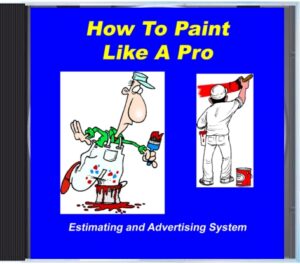 Setting up a painting business offers a promising venture with the potential for steady growth. In fact, painting businesses are a mainstay in the construction and home improvement industry.
Setting up a painting business offers a promising venture with the potential for steady growth. In fact, painting businesses are a mainstay in the construction and home improvement industry.
This guide takes you through a comprehensive step-by-step process to craft a solid business plan, ensuring that your painting business starts on a firm foundation and grows successfully.
Introduction
A painting business is a viable venture that caters to various sectors including residential, commercial, and industrial clients. To set up a thriving painting business, a robust business plan is crucial.
A well-drafted plan will not only give direction to your venture but will also appeal to potential investors, if necessary. This guide offers a detailed blueprint to help you establish a prosperous painting business.
Step 1: Executive Summary
The executive summary offers a snapshot of your business. Here, you highlight the business name, mission, vision, and objectives.
- Business Name: Choose a name that resonates well with your target clientele.
- Mission Statement: Sum up the primary purpose of your business succinctly.
- Vision Statement: Outline the long-term goals of your business.
- Objectives: Mention the specific, measurable, achievable, relevant, and time-bound (SMART) goals for your business.
Step 2: Business Description
In this section, provide a detailed description of your business.
- Background: Explain the genesis of your business idea.
- Services Offered: Enumerate the different painting services you plan to offer.
- Market Problem: Identify the gap or problem in the market that your business intends to fill.
- Solution: Explain how your business intends to solve the identified problem.
- Business Model: Detail how your business will make money.
- Unique Selling Proposition (USP): Mention what sets your business apart from competitors.
Step 3: Market Analysis
The market analysis offers insights into the industry, market, and competition.
- Industry Overview: Provide an analysis of the painting industry, including current trends and future predictions.
- Target Market: Define your target market segment in terms of demographics, psychographics, and geography.
- Competitive Analysis: Identify and analyze your main competitors, highlighting their strengths and weaknesses.
Step 4: Marketing and Sales Strategy
In this section, detail how you intend to market your business and generate sales.
- Marketing Strategy: Explain your marketing strategy, including the 4 Ps (Product, Price, Place, Promotion).
- Sales Strategy: Describe your sales strategy, emphasizing on customer acquisition and retention.
- Promotion and Advertising: Lay out your promotion and advertising plan, focusing on the channels you intend to use.
Step 5: Operational Plan
Your operational plan outlines how the business will function on a day-to-day basis.
- Location: Mention the physical location of your business, if applicable.
- Equipment and Supplies: List down the equipment and supplies needed to run your business.
- Staffing: Outline your staffing plan, including the number and types of employees required.
- Training: Mention the training programs you plan to offer to your employees.
- Operational Workflow: Describe the workflow of your operations from customer acquisition to service delivery.
Step 6: Management and Organization
In this section, provide information about your business’ organizational structure and management.
- Ownership: Detail the ownership structure of your business, including the names and responsibilities of the owners.
- Organizational Structure: Illustrate your business’s organizational structure, showing the various departments and their functions.
- Management Team: List the members of your management team, including their qualifications and roles.
- Advisory Board: If applicable, mention the members of your advisory board and their contributions to your business.
Step 7: Financial Plan
Your financial plan gives an overview of the financial aspects of your business.
- Startup Costs: Outline the initial costs needed to start your business.
- Revenue Model: Detail your revenue model, including your pricing strategy.
- Financial Projections: Provide financial projections for the first 5 years, including income statements, cash flow statements, and balance sheets.
- Break-Even Analysis: Perform a break-even analysis to determine when your business will become profitable.
Step 8: Appendix
In the appendix, include any additional documents that support your business plan.
- Portfolio: Showcase a portfolio of your previous painting projects, if any.
- Testimonials: Include testimonials from satisfied customers, if available.
- Licenses and Permits: List the licenses and permits you have acquired or intend to acquire.
Conclusion
Starting a painting business can be a rewarding venture, both financially and personally. Crafting a thorough business plan forms the cornerstone of a successful business setup. By following this step-by-step guide, you are well on your way to setting up a prosperous painting business that meets the needs of your target market while providing quality services that set you apart from the competition.
Remember, the business plan is not a one-time document but a living guide that should be revisited and revised periodically to align with the changing market dynamics and business goals. Armed with a robust business plan, you are now ready to paint your way to success!
 Make Money Faster, Easier in Your Painting Business http://AmazingStarMurals.com
Make Money Faster, Easier in Your Painting Business http://AmazingStarMurals.com